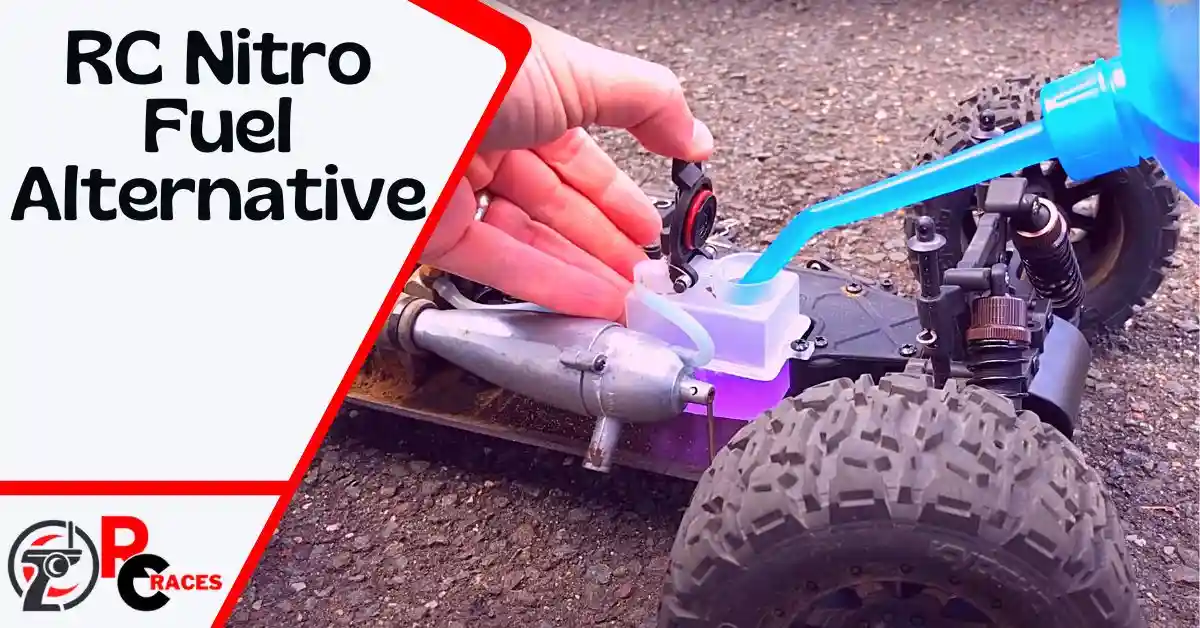For realism, better speed and longer run time, nitro engines are attractive to many RC enthusiasts. Similar to real cars, these engines require fuels called nitro fuel. Unfortunately, a big downside of nitro fuel is its high price. So, RC hobbyists worldwide are looking for cost-effective alternative materials they can use as additives to readymade nitro fuels. Would you like to know the alternatives too?
In this article, we will share a list of components that are good alternatives to regular fuel ingredients. Also, you will learn how to make nitro fuel at home by combining the essential materials.
Read and enjoy.
Understanding the Basic: RC Nitro Fuel and Its Ingredients
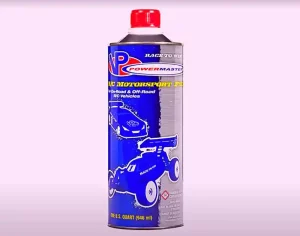
In short, RC nitro fuel is a special blend of different flammable and energetic substances. It is particularly formulated to use as the power source of RC vehicles with nitro engines. The key components in the RC fuel work together and generate power to run the vehicle.
Let’s get introduced to the primary substances in the fuel and their unique roles:
a. Methanol
Methanol is the key ingredient in the RC nitro fuel. The component is used as the main fuel source as it is extremely flammable and known for its high-energy content. Due to these characteristics, this substance is perfect for powering a nitro engine.
b. Nitromethane
Nitromethane is added to the fuel as the power booster as it enhances the energy content. This highly energetic compound enhances the combustion characteristics of nitro fuel.
c. Lubricants/oil
Lubricants or oil are added to the Nitro fuel to lubricate the engine’s moving parts. It reduces internal friction and prevents the engine from extreme wear and damage.
The Ratio of Methanol, Nitromethane and Lubricants in Nitro Fuel
RC nitro fuel is a blend of methanol, nitromethane and lubricants. They are combined carefully with a specific ratio to ensure the engine’s optimal performance. However, the ratio can vary as all nitro engines are not designed the same.
Here is a table showing the common ratio of these content in nitro fuel.
| Fuel content | Percentage |
| Methanol | 60-80% |
| Nitromethane | 10-40% |
| Lubricants/oil | 8-25% |
| Fuel dyes | Vary. |
| Other additives | Vary. |
Nitro Fuel’s Alternatives Ingredients You Can Apply
Instead of the regular ingredients, some alternative components can be used in the nitro fuel. Here is the list of those substitute substances:
1. Synthetic oil
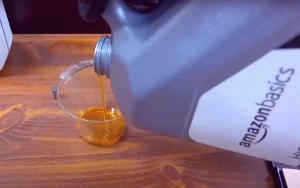
Many RC car owners use synthetic oil in the nitro fuel formulation instead of castor oil for lubrication. It is even better than castor oil in many cases. For example, synthetic oil will help you reduce inner friction, which protects the engine’s components and enhance its lifespan.
If you want to try it, ensure that synthetic oil is compatible with the other ingredients in the fuel. Also, you must maintain the recommended blending ratio based on the engine’s requirement for the desired performance.
2. WD-40
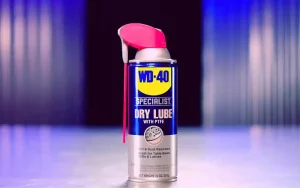
Though it is a well-known lubricant, WD-40 works fine as an additive in RC nitro fuel. It can be a good lubricant for the nitro engine that prevents friction and wear and tear. Moreover, WD-40 contains solvents that keep the engine clean and remove deposits which can improve the overall performance.
Another good point of the lubricant is that it protects the engine from rust caused by moisture. When adding WD-40 to nitro fuel, ensure that you maintain the accurate ratio. You can ask the engine manufacturer or an expert for advice about the ratio since it varies depending on the engine type.
3. Klotz Benol
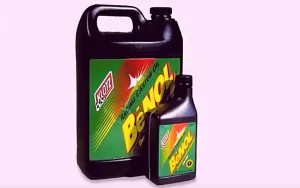
Klotz Benol is another castor-based lubricant additive you can use for some nitro engines, particularly airplane engines. Though it is an irregular additive in the nitro fuel, it works fine if used in the recommended ratio.
The substance reduces friction inside the engine and enhances performance and longevity. However, it may not be compatible with all types of nitro engines. So, using the additive may require some experiments before considering it a regular nitro ingredient alternative.
How to Make Nitro Fuel: Step-By-Step Guide
Making RC nitro fuel at home is possible if you have the expertise to combine essential ingredients with an accurate ratio. Here is a guide on how you can make nitro fuel. However, ensure your safety and handle ingredients carefully.
Things you need:
- Castor oil
- Nitromethane
- Methanol
- Measuring cups (in ounces)
- Funnel
- One-gallon jug (128 oz.)
Step 1: Gather all the above materials in one place to quickly access everything.
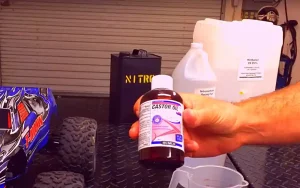
Step 2: Measure the castor oil ratio for your nitro fuel. For example, 8% of oil content (10.2 ounces) is considered a standard ratio. Get the required amount of oil you need to produce the formulation.
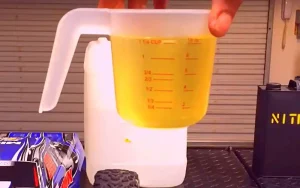
Step 3: Pour the oil into the jug. You should use a funnel to avoid spillage. Now shake the jug gently to dissolve the oil, as castor oil is thick and sticky.
Step 4: Measure the nitromethane ratio using the cup. Comparing the oil ratio, 30% of nitromethane (38.4 ounces) is a good percentage.
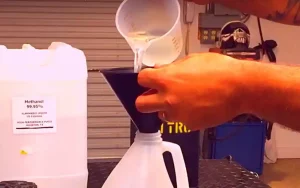
Step 5: Slowly pour the nitromethane through the funnel into the jug. Shake the jug thoroughly so the castor oil and nitromethane mix well.
Step 6: Finally, measure the methanol ratio using the cup. Here we are taking 62% of methanol (79.3 ounces) for the formulation.
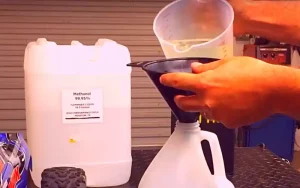
Step 7: Carefully pour methanol into the jug and shake properly. Ensure that all the ingredients have been mixed well.
Step 8: Let the mixture sit for some time. Ensure that all three ingredients have been dissolved completely. After preparing the nitro fuel, fill the engine’s oil tank and start it.
Does Different Percentage of Fuel Content Damage a Nitro Engine?
Nitro fuel content percentage is crucial to operating a nitro engine optimally. For example, 10-40% nitromethane in nitro fuel is common and recommended. Using more or fewer ingredients than the recommended percentage can damage the engine.
Nitro fuel with a higher percentage of nitromethane usually increases heat and stress on the engine. Using longer can cause overheating, extreme wear and even engine failure.
In contrast, nitro fuel with less percentage of nitromethane than recommended is a common reason for poor power output and insufficient lubrication. It also increases internal friction and damages the engine over time.
For these reasons, using the accurate percentage of fuel content based on the engine and manufacturer’s recommendation is crucial. Contact the manufacturer or an RC expert to get precise guidelines if you are unsure about the correct percentage.
Frequently Asked Questions
Q. Why do you need an alternative to nitro fuel?
People look for nitro fuel alternatives due to two key reasons. Professional-grade nitro fuels are very expensive, so using a cheap alternative makes the fuel cost-effective. Moreover, many RC experts use different additives to regular nitro fuels to get customized performance from the engine.
Q. Is homemade nitro fuel safe to use?
They can be both safe and unsafe, depending on the formulation. If you have experience and knowledge of the base ingredients of nitro fuels and their recommended ratio, you can make it safely at home.
Final Words
Using different additives in nitro fuel is a common practice in the hobby. Along with affordable options, these alternatives will let you experiment with different formulas. The best thing is that you can discover your personalized RC fuel for more thrilling racing.

